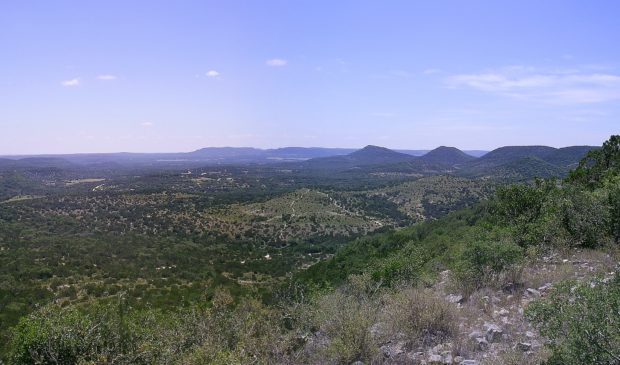Monetizing the carbon cycle may lead to ecological solutions
Thursday, January 23, 2020 by
Jessi Devenyns In the very near future, there is a possibility that Texas landowners will be able to reduce carbon emissions while earning money on their unused land.
Jim Blackburn, a professor at Rice University and the president of the Trinity-Edwards Springs Protection Association came to the Environmental Commission on Jan. 15 to present an idea for a different carbon economy that uses ecology as a land management strategy. His approach essentially replicates the natural carbon cycle but puts a price tag on sequestration.
Undeveloped, unplowed land absorbs carbon naturally and further benefits the environment by reducing flood severity, nurturing fisheries and providing migratory bird habitat. This process, Blackburn explained to commissioners, can be encouraged by paying private landowners to keep their land untouched apart from cattle ranching, which still allows land to be a viable candidate for this exchange.
Already the concept has been a hit with both environmentalists and landowners. “We’re talking to people who are absolutely opposed to climate change issues that were wide open to talking about receiving money to put carbon dioxide somewhere,” he said.
That “somewhere” is private lands all over Texas. With 6,500 acres of Texas land available for carbon storage, the nonprofit Texas Coastal Exchange estimates that 13,121 metric tons of CO2 can be taken out of the atmosphere. Blackburn, who works with the South Texas nonprofit, said that in order to take advantage of the untouched acreage, there needs to be an entity to broker financial agreements between landowners and organizations that are seeking to reduce their carbon footprints.
The Texas Coastal Exchange hopes to implement a strategy to connect landowners with unused acres and carbon dioxide-emitting companies in a mutually beneficial partnership by the summer of 2020.
“This is potentially a new approach that can offer a lot of hope to the agricultural community,” said Blackburn. “If the landowners do well, the carbon storage does well.” In Texas coastal wetlands, he said each acre can absorb on average two tons per year.
Current estimates from the nonprofit show that carbon storage agreements will fetch between $40 and $60 a ton in the next three years. Today’s price for a ton of carbon storage hovers around $15 a ton. Quadrupling the price of carbon storage, Blackburn said, will make keeping land undeveloped for 10-year stretches a “very successful and very different approach to environmental conservation.” Bloomberg estimates that carbon needs to be priced at $40 a ton in order to meet the greenhouse gas reduction targets outlined in the Paris Agreement.
Although a land-intensive solution, it is also one that has the potential to not only affect the amount of carbon dioxide in the atmosphere, but also improve stormwater storage, spring water recharge zones, endangered species protection and water supply enhancement.
With many international companies and governments – including the city of Austin – committing to carbon neutrality, Blackburn told commissioners he anticipates this approach to carbon sequestration gaining steam.
Already, said Blackburn, “We have landowners lined up around the block to participate.”
Photo by Ydoc87 Cody Ely [CC BY 4.0].
The Austin Monitor’s work is made possible by donations from the community. Though our reporting covers donors from time to time, we are careful to keep business and editorial efforts separate while maintaining transparency. A complete list of donors is available here, and our code of ethics is explained here.
You're a community leader
And we’re honored you look to us for serious, in-depth news. You know a strong community needs local and dedicated watchdog reporting. We’re here for you and that won’t change. Now will you take the powerful next step and support our nonprofit news organization?






